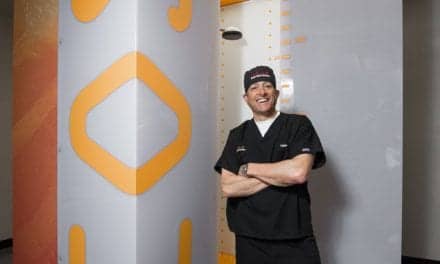In conjunction with Patient Safety Awareness Week, the American Society for Radiation Oncology (ASTRO) published an update to its framework for safe and effective radiation therapy treatment. The comprehensive reference guide, Safety is No Accident: A Framework for Quality Radiation Oncology and Care, is available for download.
“Patient safety is a central tenet of radiation oncology practice, and it is especially important as major advances in treatment planning and delivery increase the complexity of cancer care,” comments Paul Harari, MD, FASTRO, chair of the ASTRO board of directors. “Safety is No Accident includes essential guidance for radiation therapy clinics to promote a safe environment for the life-saving treatments they deliver to patients.”
Written by clinical experts in radiation oncology, medical physics and dosimetry, Safety is No Accident outlines the personnel, processes and procedures needed to build and maintain a culture of safety across radiation oncology practices. The effort was led by ASTRO’s clinical affairs and quality council leadership, including chair Todd Pawlicki, PhD, FASTRO; Vice-chair Benjamin Smith, MD; previous Chair James A. Hayman, MD, MBA, FASTRO; and CAQC steering committee chair Eric Ford, PhD. ASTRO also provides a video and handout with questions for patients to ask their doctor about radiation safety.
The framework, a key component of ASTRO’s Target Safely patient safety initiative, was last updated in 2012. In the interim, ASTRO launched a national system for safety event reporting and shared learning (RO-ILS: Radiation Oncology Incident Learning System) and a comprehensive facility accreditation program focused on quality improvement (Accreditation Program for Excellence/APEx). The current update incorporates knowledge gained through these initiatives, as well as enhanced measures for radiation safety, supervision of stereotactic treatments, and certification of dosimetrists and radiation therapists.
While Safety is No Accident includes specific details to help practitioners implement its recommendations, the emphasis remains on best practices that apply broadly across technologies and situations, such as staff maintaining open lines of communication and reporting all safety-related events quickly and thoroughly.
“Over the next five years, it is likely that emerging technologies will continue to become part of routine practice and result in new unexpected challenges to quality and safety,” write Pawlicki, Smith, Hayman and Ford in the introduction. “Going forward, we need to take what we have learned about quality and safety, combine it with the most effective technologies and activities such as automation, simplification and standardization, and incorporate them into a continuous quality improvement cycle to give our patients what they deserve, the best care possible.”






